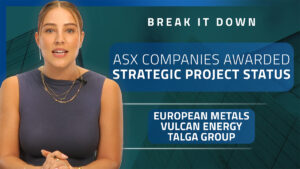- Why ESG investing is here to stay
- ESG vs impact investing: what’s the difference?
- Is ESG investing a safer bet?
The world of investing has changed a lot in recent years.
With climate change, social justice movements and sustainability concerns taking centre stage, many investors are now looking beyond traditional financial returns.
They want their money to make a positive difference. This shift has given rise to two major trends in the investment world: ESG investing and impact investing.
Both aim to make the world a better place, but they’re not exactly the same thing.
Understanding the difference between them can help investors – especially those new to the ESG scene –make smarter choices that align with their values.
First, why ESG is more than just a trend
Over the past decade, ESG issues have moved from the fringes to the mainstream.
More and more companies are now publishing detailed ESG reports, showing how they’re tackling everything from reducing their carbon footprint to improving workplace diversity.
It’s not just about being “green” any more – investors want to know how companies are handling their social responsibilities and managing governance risks.
This shift is no surprise.
Public awareness of environmental and social issues has grown, partly due to high-profile climate protests, natural disasters and social justice movements.
As a result, investors are looking for companies that are committed to more sustainable and ethical practices.
In fact, the global ESG investing market hit US$25 trillion in 2023, and is expected to grow to US$167 trillion by 2034, according to Precedence Research. It’s a huge jump, with an annual growth rate of nearly 19%.
Clearly, ESG investing is here to stay.
ESG vs Impact Investing: What’s the difference?
At first glance, ESG investing and impact investing may seem pretty similar. But dig a little deeper, and you’ll find they’re actually quite different.
ESG investing is about directing capital into companies that are making improvements to their environmental and social footprint, as well as enhancing governance practices.
Investors use ESG criteria to assess how companies are performing on these issues and choose to invest in those that are making progress.
“The aim of ESG is actually to mitigate risks and identify sustainable growth opportunities, while maintaining traditional financial goals,” said a note from Veris Wealth Partners.
For Aussies looking to invest in ESG, it’s straightforward to do so through listed companies.
Many stock exchanges, including the ASX, now offer a range of ESG-focused funds, such as exchange-traded funds (ETFs), which invest specifically in companies that meet certain ESG standards.
Investors can also buy individual stocks of ASX companies that have demonstrated strong ESG performance.
On the other hand, impact investing is more proactive.
It involves putting money into ventures that are specifically designed to generate a positive, measurable impact.
These aren’t just companies with good ESG practices – they are organisations which have the very purpose to solve a problem, like providing clean water or supporting sustainable agriculture.
While ESG investing allows investors to easily buy shares in publicly listed companies, impact investing often requires more effort.
Impact investors may need to focus on private companies, startups, or even social enterprises that are still in the early stages of growth.
These ventures are less likely to be publicly traded, meaning investors may need to look at venture capital or private equity opportunities
However, as impact investing continues to grow, more funds and platforms are emerging to make these private investments more accessible to a wider range of investors.
“A core principle of impact investing is intentionality, an explicit aim to generate a specific outcome from investments. It is inherently forward-looking,” said a note from Novata, an ESG-focused firm.
“Impact investing is focused on carrying out a particular goal, and usually does not consider an organisation’s past activities.”
Also read > AI can tackle climate change, boost ESG – but we need to talk about risk
Is ESG investing a safer bet, then?
ESG investing, therefore, tends to be a bit more mainstream and, in some ways, a safer bet.
Since it’s based on evaluating and investing in existing companies that are making improvements in their ESG practices, it’s a lower-risk option compared to impact investing, which often involves early-stage or more niche companies.
ESG strategies are also typically easier to understand and implement. Many large investment funds already have ESG criteria built into their approach, so it’s relatively easy for investors to get started.
However, ESG investing isn’t without its challenges.
One of the main drawbacks is the annual management fees. ESG-focused funds, such as those ETFs listed on the ASX, often have higher fees than traditional investments, which can eat into your returns.
Also, the focus on ESG can sometimes be a bit too broad, with investors trying to address multiple issues (e.g., climate change, diversity, and good governance) at once.
This can make it harder to achieve meaningful progress in any one area.
“Some ESG investors are driven by non-pecuniary preferences (values), while others emphasise risk and return opportunities (value),” said a note of ESG consulting firm, RSM.
“However, a common point is that financial returns are often at the forefront of ESG investment decisions.”
This story does not constitute financial product advice. You should consider obtaining independent advice before making any financial decision.
Read MoreESG











